Throwing is one of the fundamental movement skills, a natural movement pattern all humans develop at an elementary level by 5 years of age. With proper instruction and practice a fully mature throwing pattern can be achieved as early as 6 to 8 years old.
However, overdoing or overloading any natural movement pattern can spell trouble.
Eric Cressey, world renown strength and conditioning coach to elite professional baseball players put it this way, “…there is absolutely nothing healthy about throwing a baseball, as the body is being contorted to extreme positions as the arm accelerates in the fastest motion ever recorded in sports. These outrageous demands warrant a multi-faceted approach to protecting pitchers from injury” (Cressy, 2010).
How Many Young Athletes Are At Risk?
 More than 900,000 high school athletes in the United States participate in throwing dominant sports, which does not take into account sports with throwing positions or events such as American football or track and field (Zaremski, et al., 2019)
More than 900,000 high school athletes in the United States participate in throwing dominant sports, which does not take into account sports with throwing positions or events such as American football or track and field (Zaremski, et al., 2019)- As of 2012 in the United States over 15 million children and adults played organized baseball. Close to 6 million of those include children in the 8th grade or lower (Fleisig & Andrews 2012).
- Participation by adolescents in baseball continues to rise with a 13% increase just from 2017 to 2018. (Zaremski, et al., 2019)
- Unfortunately, with this increasing popularity comes more chance for injury. Throwing-arm pain was reported 74% of the time by youth baseball players. Pitchers in particular seem to suffer the lion’s share of injuries, sustaining 40% of shoulder injuries and 57% of elbow injuries (Zaremski, et al., 2019)
The Alarming Rise of Tommy John Surgery in Young Athletes
The most concerning issue is the increased frequency over the last 20 years of elbow surgery to reconstruct the ulnar collateral ligament. From 2003 to 2014 this surgery, also known as Tommy John surgery, increased 343%, with 56.6% in those 15 to 19 years of age! (Zaremski, et al., 2019).
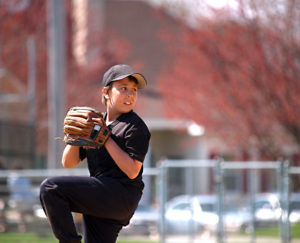
As an example of this dramatic increase, world renown orthopedic surgeon Dr. James Andrews performed Tommy John surgery on just one youth athlete and 30 adult athletes in 1996, representing just 3% of surgeries on youth athletes. In 2008 he had performed a total of 103 surgeries with 33 of those on youth athletes. That is a jump from 3% to 32% of surgeries performed on youth athletes in just 12 years (Fleisig & Andrews 2012)!
Even more concerning is that these injuries are occurring at younger and younger ages. Fully 5% of little league-aged players sustain injuries that completely prevent them from throwing. And one prominent sports medicine surgeon has seen torn elbow ligaments in players as young as 8 years old (Zedalis, 2015)!
The irony is that the kids who specialize early and play too much without recovery periods are usually the ones hoping to make it in the big leagues. Dr. Andrews points out that if a young athlete is operated on in the 8th or 9th grade their chances of even reaching the collegiate level goes down threefold (Davis, 2018).
All these statistics about the prevalence and rise in youth arm injuries are bad enough but they actually underrepresent the problem. The fact is that pain or injuries not requiring surgery in youths create microtraumas that accumulate over time and are the likely cause of UCL ruptures in adult pitchers (Fleisig et al., 2009).
What Exactly is the Elbow Joint and Why is It So Prone to Injury?
To better understand what is going on and how we can prevent these injuries and reduce the need for surgery we need to talk about the relevant functional anatomy of the elbow.
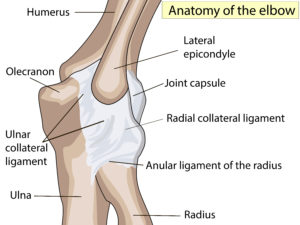
The 3 bones that make up the elbow joint include the upper arm, the humerus, and the two bones of the forearm, the radius and the ulna. The elbow joint is both a hinge joint allowing the elbow to flex and extend, and a pivot joint allowing the forearm to rotate (supinate & pronate). On the inner and outer sides of the elbow collateral ligaments hold the joint together, preventing dislocation.
The ligament implicated in most throwing injuries is the ulnar collateral ligament (UCL), which connects the humerus to the ulna on the inside of the elbow closest to the body. It is this ligament which must withstand high stress to stabilize the elbow during overhead throwing (Andrews et al., 2012).
Little Leaguer’s Elbow vs. Pitcher’s Elbow
Little Leaguer’s elbow (medial epicondyle apophysitis) is distinct from pitcher’s elbow in older adolescents and adults. Younger athletes are at higher risk of elbow injuries simply because their bones have not fully fused. In the elbow, there are 6 ossification sites, or growth plates that are not yet filled in with solid bone.
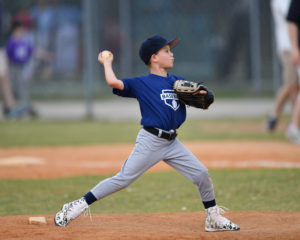
Unfortunately, it is the inner elbow, which is disproportionately stressed by overhead throwing, that fuses last, between 14 and 16 years of age (Andelman et al., 2018). Because the growth plate is structurally weaker than surrounding bone, muscle, and ligaments it is therefore at highest risk for injury with repetitive stress.
So, prior to full fusion of the elbow joint, young athletes typically under the age of 10, are at more risk of inflammation or separation of the growth plate, whereas adults or older adolescents will get the distinctive UCL tear that often results in Tommy John surgery.
Little leaguer’s elbow typically heals completely with rest and rehabilitation within 2 to 4 months. But if the proper protocol is not followed it may lead to early growth plate closure or fracture which could result in surgery (Gamble, 2018).
Some risk factors and best practices to prevent little leaguer’s elbow or Tommy John surgery are:
-
Avoid Year-Round Play
Young players should take off 3 to 4 months from throwing each year to avoid overuse. Additionally, they should not participate in showcases, multiple leagues, or travel ball as these all lead to overuse.
-
Limit Pitch Count
Limit single game pitches to less than 75, and total season pitch counts to under 1,000.
-
Strength and Flexibility Training
This can be done with more intensity during the 3 to 4 month break from baseball along with playing other sports to improve overall athleticism. Specifically, core stability and lower body strengthening should be stressed as young athletes do not properly use their lower body & core to generate and transfer force well, which places excess stress on the arm during a throw (Andelman et al., 2018). This is important as it has been shown that 47% of ball velocity can be attributed to lower body force production (Zarmeski et al., 2019). Global flexibility is important as well to ensure a full range of motion and reduce possible compensations. And of course, shoulder and arm stability and strength exercises should be implemented from scapular stabilizers, to rotator cuff and down to the forearm as well.
-
Do Not Play Catcher After Throwing More Than 40 Pitches in a Game
(Andelman et al., 2018). Surprisingly, it was found that 70% of youth catchers show signs of little league elbow in comparison to 63% of pitchers! Part of the problem is that catchers typically throw from a squat or semi-squat position, so they are not able to generate force from the lower body, thereby putting more stress on the arm during a throw (Gamble, 2018).
-
Limit Play, Stretch and Strengthen After a Recent Growth Spurt
There is increased risk as the rate of bone growth exceeds the rate of bone and muscle strength and flexibility. Also, taller players typically can throw with greater velocity which increases arm stress.
-
Develop Proper Throwing Mechanics
This is important to reduce undo stress on the elbow. Working with the team coach or a private coach on mechanics is a good idea, however, working with a private coach has been linked to increased elbow problems as it often leads to excessive throwing or even year-round throwing (Gamble, 2018). Typical mechanical flaws that put stress on the elbow include:
- “Pushing” the ball or “leading with the elbow”
- Early arm rotation or high shoulder external rotation at the moment of foot contact, which is a result of poor timing between arm path and the stride of the lower body
-
Do NOT Pitch While Fatigued!
Of all the risk factors leading to major elbow injuries requiring surgery, fatigue showed the greatest correlation with a 3600% increased risk (Kerut et al., 2008). Look for the following signs of fatigue (Fleisig & Andrews, 2012):
- Decreased ball velocity
- Decreased accuracy
- Upright trunk while pitching
- Dropped elbow while pitching
- Increased time between pitches
-
Avoid Using a Radar Gun
Throwing faster than 85 mph results in a 2.5 times greater risk of elbow surgery (Zaremski et al., 2019).
-
Pitch Type
There has been a long-held belief that throwing breaking pitches placed more stress on the elbow. Typical guidelines stated that no curveballs should be thrown until puberty or full skeletal maturity. However, recent research shows that varus torque on the elbow was significantly less in a curveball than in a fastball (Fleisig & Andrews, 2012). One issue with very young players, however, is that their mechanics are inconsistent so this is what could be creating the risk. It is suggested that the steps in teaching mechanics are:
- Basic skills of throwing, catching, hitting, & running
- Fastball pitching mechanics
- Change-up pitching pitching mechanics
- Breaking pitches
-
Play More Catch!
Yes, pitching and throwing are not the same thing. Young athletes should play catch lightly at a moderate distance to develop arm strength.
-
Warm Up Properly
Eric Cressey teaches all his players to “warm up to throw, don’t throw to warm up.” He encourages all his athletes to engage in 8 to 10 dynamic flexibility drills followed by easy sprinting progressions before picking up a ball (Cressey, 2010).
-
Avoid Early Sports Specialization (ESS)
This is advised by both the American Academy of Pediatrics and Pitch Smart guidelines. Children are encouraged to participate in various sports and activities throughout the year. Young athletes participating in their primary sport for more hours per week than their age were more likely to sustain an injury. Among current professional baseball players those that specialized early reported significantly more serious injuries than those that did not (Zaremski et al., 2019). Along with playing other sports, Zaremski et al (2019) highly recommend unstructured free play as an imperative for proper motor development.
Strength & Conditioning Protocol
Besides free play and playing other sports, a well-designed strength and conditioning program can have far reaching results in preventing injury and increasing success and enjoyment in any sport. In fact, a flexibility and strengthening program for youth baseball players demonstrated a 50% reduction in medial elbow injuries in just 1 year (Zaremski et al., 2019).
The main goals should be coordination, athleticism, and general fitness. Specific areas to focus on would be flexibility, joint mobility, coordination, balance, and proprioception (Fleisig, et al, 2009).
Because throwing properly involves using the entire kinetic chain to generate force, a strength training program should involve training the entire body. A comprehensive approach recommended by Zaremski et al. (2019) includes the following:
- Improve shoulder range of motion, as deficits of shoulder ROM are associated with medial elbow injury
- Strengthen flexor forearm of the dominant side, as there is a high level of activity of these muscles during the throw. This will reduce muscle fatigue during throwing.
- Multi-plane lower body exercises to improve range of motion as well as strength, as there is a link between hip abduction weakness and shoulder blade dysfunction in young overhead athletes. Exercises include
 deadlifts, squats, lunges, kettlebell swings, as well as rotational medicine ball exercises, sandbag squats and lunges and land-mine rotations, and matrix upper and lower body reaching rotations.
deadlifts, squats, lunges, kettlebell swings, as well as rotational medicine ball exercises, sandbag squats and lunges and land-mine rotations, and matrix upper and lower body reaching rotations. - Lower body range of motion and strength produce the force that transfers through the core. Good core stability and strength will help stabilize the spine as well as help decelerate the arm and reduce shear forces in the shoulder joint and rotator cuff. Zaremski recommends a focus on transverse plan (rotational) core exercises such as landmine rotations, diagonal flexion and extension exercises, single leg deadlifts and acceleration and deceleration medicine ball catches.
- The thrower’s paradox is the idea that the shoulder needs enough mobility to perform but stability to withstand injury. So here is where stretching and mobility exercises for the shoulder joint as well as scapula come in to play. For strength and stability isolated rotator cuff strengthening exercises such as internal and external rotations with a light dumbbell should be followed by integrated rotator cuff/shoulder exercises where the whole body is being used along with the shoulder. For instance, a single leg squat with a sword draw (where the arm comes across the body from the hip to opposite shoulder while rotating the arm externally).
Conclusion
Prior to 1974 when Tommy John had the first successful UCL reconstruction surgery, a tear to this ligament was career ending. Now, unfortunately many look at this surgery as a ticket to abuse their arm in the pursuit of glory.
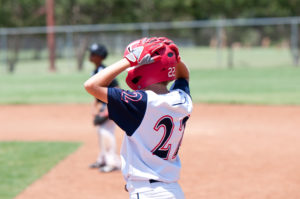 But the truth is that there are ways to prevent the surgery and, in the process, create stronger, healthier and happier well-rounded athletes by playing multiple sports and engaging in unstructured free play. In addition, with a smart and focused full body approach to strength and conditioning young players can avoid injury and surgery and will last longer in their chosen sport and have more fun doing it.
But the truth is that there are ways to prevent the surgery and, in the process, create stronger, healthier and happier well-rounded athletes by playing multiple sports and engaging in unstructured free play. In addition, with a smart and focused full body approach to strength and conditioning young players can avoid injury and surgery and will last longer in their chosen sport and have more fun doing it.
John Smoltz, the only pitcher to make it to the hall of fame after Tommy John surgery, summed it up best in his induction speech when addressing the problems in youth sports, saying:
“I want to encourage the families and parent that are out there that this is not normal to have a surgery at 14 and 15 years old. That you have time, that baseball is not a year-round sport. That you have an opportunity to be athletic and play other sports. Don’t let the institutions that are out there running before you guaranteeing scholarship dollars and signing bonuses [convince you] that this is the way.” (Davis, 2018).
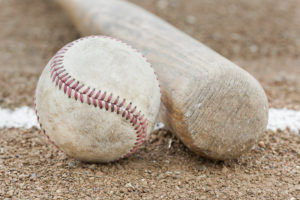
References:
Andelman, S., DiPrinzio, E., Hausman, M. (2018). Elbow injuries in the pediatric athlete, Annals of Joint; 3:21, 1-12.
Choose PT.com, What is Pitcher’s Elbow?, 2020, https://www.choosept.com/resources/detail/pitchers-elbow
Cressey, E. Understanding Elbow Pain – Part 4: Protecting Pitchers, May 21, 2010. https://ericcressey.com/understanding-elbow-pain-part-4-protecting-pitchers
Davis, C. Teen Tommy John surgeries, youth sports injuries reach epidemic proportions, June 28, 2018. Sun Sentinel: https://www.sun-sentinel.com/sports/fl-sp-tommy-john-youth-injuries-20180618-story.html
Flesig, G.S., Weber, A., Hassell, N., Andrews, J.R. (2009). Prevention of elbow injuries in youth baseball pitchers Current Sports Medicine Reports 8 (5), 250-254.
Flesig, G.S., Andrews, J.R. (2012). Prevention of elbow injuries in youth baseball pitchers Sports Health 4 (5), 419-424.
Gamble, E., BSR Physical Therapy, Little league elbow: 5 things parents and coaches should know, February 12, 2018: https://www.bsrphysicaltherapy.com/2018/02/12/little-league-elbow/
Kerut, E.K., Kerut, D.G., Fleisig, G., Andrews, J. (2008). Prevention of arm injury in youth baseball pitchers, Journal of the Louisiana State Medical Society, 160, 95-98
Olsen, S.J., Fleisig, G., Dun, S., Loftice, J., Andrews, J. (2006). Risk factors of shoulder and elbow injuries in adolescent baseball pitchers, The American Journal of Sports Medicine, 34 (6), 905-912
OrthoInfo, From the American Academy of Orthopedic Surgeons: Elbow Injuries in the Throwing Athlete, https://orthoinfo.aaos.org/en/diseases–conditions/elbow-injuries-in-the-throwing-athlete/
Rossy, W., Oh, L. (2016). Pitcher’s elbow: medial elbow pain in the overhead-throwing athlete Current Review Musculoskeletal Medicine, 9, 207-214
Zaremski, J., Zeppieri, G., Tripp, B. (2019). Sport specialization and overuse injuries in adolescent throwing athletes: a narrative review, Journal of Athletic Training, 54 (10), 1030-1039
Zedalis, J. New Jersey Advanced Media for NJ.com, High School Sports, Tommy John surgery: Experts suggest 8 ways young pitchers can avoid dreaded 3 words, August 24, 2019: https://www.nj.com/highschoolsports/article/tommy-john-surgery-experts-suggest-8-ways-young-pitchers-can-avoid-dreaded-3-words/
Craig Valency, MA, CSCS, president and co-founder of SPIDERfit, has been a personal trainer for the last 11 years. He is currently working at Fitness Quest 10 in San Diego, an elite personal training and athletic conditioning facility. He specializes in youth strength and conditioning programs that promote physical literacy, injury prevention and optimal performance. Along with training youths from 6 to 18 years of age for general fitness, Craig has also worked with some of the top junior tennis players in the world. He has been a physical education consultant for the Stevens Point school district in Wisconsin for the last 3 years, helping revamp the district wide programming for the K-12 PE curriculum. Craig earned his bachelor degree from UCLA, and Masters Degree in Kinesiology from San Diego State University.

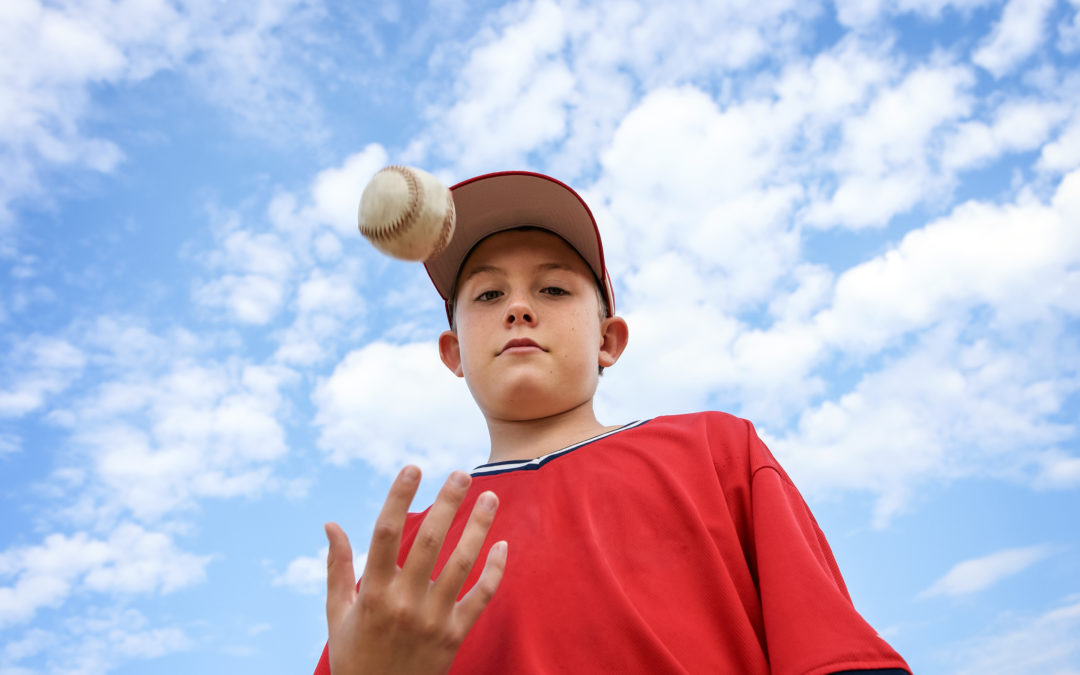
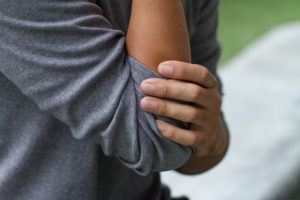 More than 900,000 high school athletes in the United States participate in throwing dominant sports, which does not take into account sports with throwing positions or events such as American football or track and field (Zaremski, et al., 2019)
More than 900,000 high school athletes in the United States participate in throwing dominant sports, which does not take into account sports with throwing positions or events such as American football or track and field (Zaremski, et al., 2019)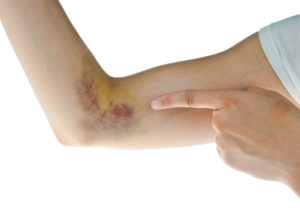 deadlifts, squats, lunges, kettlebell swings, as well as rotational medicine ball exercises, sandbag squats and lunges and land-mine rotations, and matrix upper and lower body reaching rotations.
deadlifts, squats, lunges, kettlebell swings, as well as rotational medicine ball exercises, sandbag squats and lunges and land-mine rotations, and matrix upper and lower body reaching rotations.


Connect with SPIDERfit!